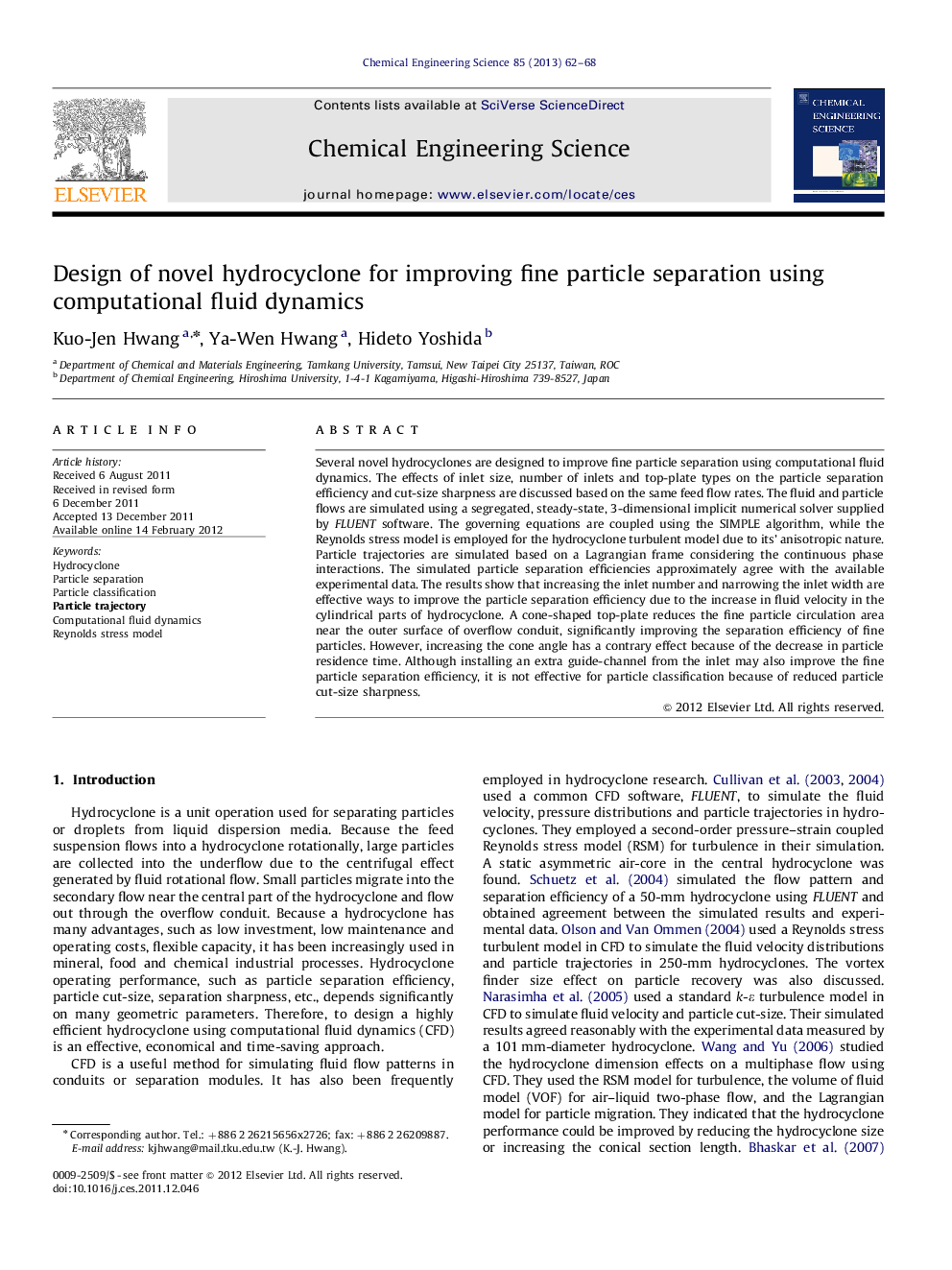| Article ID | Journal | Published Year | Pages | File Type |
|---|---|---|---|---|
| 155541 | Chemical Engineering Science | 2013 | 7 Pages |
Several novel hydrocyclones are designed to improve fine particle separation using computational fluid dynamics. The effects of inlet size, number of inlets and top-plate types on the particle separation efficiency and cut-size sharpness are discussed based on the same feed flow rates. The fluid and particle flows are simulated using a segregated, steady-state, 3-dimensional implicit numerical solver supplied by FLUENT software. The governing equations are coupled using the SIMPLE algorithm, while the Reynolds stress model is employed for the hydrocyclone turbulent model due to its' anisotropic nature. Particle trajectories are simulated based on a Lagrangian frame considering the continuous phase interactions. The simulated particle separation efficiencies approximately agree with the available experimental data. The results show that increasing the inlet number and narrowing the inlet width are effective ways to improve the particle separation efficiency due to the increase in fluid velocity in the cylindrical parts of hydrocyclone. A cone-shaped top-plate reduces the fine particle circulation area near the outer surface of overflow conduit, significantly improving the separation efficiency of fine particles. However, increasing the cone angle has a contrary effect because of the decrease in particle residence time. Although installing an extra guide-channel from the inlet may also improve the fine particle separation efficiency, it is not effective for particle classification because of reduced particle cut-size sharpness.
► Novel hydrocyclone with inlet and top-plate modifications were designed. ► Increasing inlet number can efficiently improve hydrocyclone performance. ► Narrowing inlet width can enhance hydrocyclone efficiency. ► Particle separation efficiency can be enhanced using a cone-shape top-plate. ► Extra guide-channel may increase efficiency but decrease particle cut-size sharpness.
